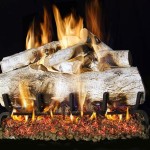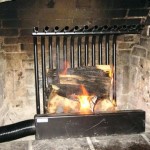How To Make A Brick Fireplace: A Comprehensive Guide
Constructing a brick fireplace is a significant undertaking that can add warmth, aesthetic appeal, and value to a home. However, it requires careful planning, meticulous execution, and adherence to building codes and safety regulations. This article provides a detailed, step-by-step guide on how to build a brick fireplace, covering essential considerations from design and materials to construction techniques and safety precautions.
Prior to commencing any construction, a thorough understanding of local building codes is paramount. Fireplaces are subject to specific regulations concerning fire safety, chimney height, and structural integrity. Consult with local building authorities to obtain the necessary permits and ensure compliance with all applicable codes. This proactive approach mitigates the risk of costly rework and potential safety hazards.
Planning and Design Considerations
The initial stage involves comprehensive planning and design. This includes determining the location of the fireplace, its dimensions, style, and the type of fuel it will use (wood, gas, or electric insert). The location should be carefully considered in relation to the room's layout, traffic flow, and proximity to combustible materials. Adequate space is crucial for both the fireplace itself and the surrounding area, allowing for safe operation and comfortable use.
Selecting the appropriate design is crucial for achieving the desired aesthetic. Options range from traditional brick fireplaces to more contemporary designs that incorporate stone, tile, or other materials. Consider the architectural style of the home and choose a design that complements its existing features. Detailed plans, including elevation drawings and cross-sectional diagrams, are essential for accurate construction. These plans should specify the dimensions of each component, the type of brick to be used, and the layout of the firebox, smoke chamber, and chimney.
The choice of fuel will influence the design of the firebox and chimney. Wood-burning fireplaces require a larger firebox and a taller chimney to ensure proper draft and efficient combustion. Gas-burning fireplaces typically require a smaller firebox and may have different chimney requirements. Selecting the fuel type early in the planning process allows for the necessary adjustments to be made to the design.
Furthermore, the design must incorporate essential safety features, such as a fire-resistant hearth that extends beyond the firebox opening to protect the surrounding floor from sparks and embers. The hearth should be constructed of non-combustible materials, such as brick, stone, or tile. The firebox itself should be lined with firebrick, a high-temperature refractory material that can withstand the intense heat of the fire.
Material Selection and Preparation
The selection of appropriate materials is critical for the durability, safety, and aesthetic appeal of the fireplace. Common materials include brick, mortar, firebrick, concrete blocks, flue liners, and various tools and accessories. The type of brick chosen will depend on the desired appearance and the structural requirements of the fireplace. Face brick is typically used for the exterior of the fireplace, while firebrick is used for the firebox lining.
Mortar is the bonding agent that holds the bricks together. Type N mortar is generally recommended for fireplace construction, as it provides a good balance of strength and flexibility. The mortar should be mixed according to the manufacturer's instructions, ensuring a consistent consistency and proper hydration. Avoid using pre-mixed mortar, as it may not provide the necessary strength and durability.
Firebrick is a crucial component of the firebox, as it protects the surrounding brickwork from the intense heat of the fire. Firebrick is available in various sizes and shapes, and it should be selected to fit the dimensions of the firebox. Firebrick mortar, also known as refractory mortar, is specifically designed for use with firebrick and can withstand high temperatures without cracking or deteriorating.
Concrete blocks are commonly used for the foundation of the fireplace and chimney. They provide a stable and level base for the brickwork. The size and type of concrete blocks will depend on the size and weight of the fireplace. Flue liners are installed inside the chimney to protect it from the corrosive effects of smoke and combustion gases. They are typically made of clay or stainless steel and should be chosen to match the diameter of the chimney.
Before construction begins, all materials should be inspected for defects and sorted according to size and shape. This will help to ensure a smooth and efficient building process. Prepare the work area by clearing any obstructions and covering the surrounding floor with drop cloths. Gather all necessary tools and equipment, including a brick hammer, trowel, level, plumb bob, mortar mixer, and safety glasses.
Construction Process: Step-by-Step Guide
The construction process involves several stages, including building the foundation, laying the brickwork, constructing the firebox and smoke chamber, and installing the chimney. Each stage requires careful attention to detail and adherence to the design plans.
Foundation: The foundation is the most critical element of the entire fireplace structure. It must be strong, level, and capable of supporting the weight of the fireplace and chimney. Begin by excavating the area for the foundation to the required depth, typically below the frost line. Pour a concrete footing into the excavation and allow it to cure completely. Once the footing has cured, build a concrete block foundation on top of it, ensuring that it is level and square. The foundation should extend beyond the footprint of the fireplace to provide adequate support.
Brickwork: Laying the brickwork requires precision and skill. Start by laying the first course of bricks on the foundation, using a level and plumb bob to ensure that it is perfectly level and square. Use a trowel to apply mortar to the ends and sides of each brick, and press it firmly into place. Remove any excess mortar with the trowel. Continue laying courses of bricks, staggering the joints for added strength and stability. Use a brick hammer to cut bricks to the desired size and shape. Periodically check the brickwork for level and plumb, making adjustments as necessary.
Firebox:The firebox is the heart of the fireplace, and it must be constructed to withstand the intense heat of the fire. Line the interior of the firebox with firebrick, using firebrick mortar to bond the bricks together. Ensure that the firebrick is tightly fitted and that there are no gaps or cracks. The firebox should be sized according to the design plans, taking into account the type of fuel that will be used. A properly constructed firebox will provide efficient combustion and protect the surrounding brickwork from damage.
Smoke Chamber:The smoke chamber is located above the firebox and serves to collect and direct the smoke into the chimney. It should be constructed with smooth, sloping walls to facilitate the flow of smoke. The smoke chamber can be built using bricks or pre-cast concrete panels. Ensure that the smoke chamber is properly sealed to prevent smoke from leaking into the room.
Chimney:The chimney is responsible for venting the smoke and combustion gases away from the house. It should be constructed to the required height, typically at least three feet above the roofline. Install flue liners inside the chimney to protect it from the corrosive effects of smoke and combustion gases. The chimney should be capped with a spark arrester to prevent embers from escaping and causing a fire. Ensure that the chimney is properly sealed to prevent water from entering and damaging the fireplace. The chimney needs to meet local codes for height and distance away from any combustible materials, as well as any nearby structures.
Safety Precautions and Best Practices
Safety is paramount when constructing a brick fireplace. Always wear safety glasses and gloves to protect your eyes and hands from injury. Use proper lifting techniques to avoid back strain. Ensure that the work area is well-ventilated to prevent the buildup of harmful fumes. Avoid working in wet or icy conditions, as this can increase the risk of slips and falls.
Follow the manufacturer's instructions for mixing and applying mortar. Use the correct type of mortar for the application. Avoid using frozen or contaminated mortar. Properly cure the mortar to ensure maximum strength and durability. Periodically clean the work area to remove debris and prevent accidents.
Inspect the fireplace and chimney regularly for signs of damage or deterioration. Repair any cracks or leaks promptly to prevent further damage. Have the chimney professionally cleaned and inspected annually to remove creosote buildup and ensure safe operation. Ensure you have working smoke and carbon monoxide detectors on every level of the home.
It is crucial to note that this article provides a general overview of how to build a brick fireplace. Due to the complexity and potential hazards involved, it is highly recommended to consult with a qualified mason or contractor before undertaking this project. A professional will be able to assess the specific requirements of your home, provide expert guidance, and ensure that the fireplace is built safely and according to code.
Building a brick fireplace is a challenging but rewarding project that can add significant value and enjoyment to a home when performed with careful planning, meticulous execution, and strict adherence to safety guidelines.

How To Build An Indoor Fireplace The Constructor

Building An Electric Fireplace With Brick Facade

Home Dzine Garden Tips On Building An Outdoor Fireplace Build A Backyard

Diy Painted Brick Fireplace Makeover On A Budget Before After The Confused Millennial

If You Re Going To Make It Better Fake Diy Brick Fireplace

How To Build An Indoor Fireplace The Constructor

How To Create An Exposed Brick Feature Wall Or Fireplace And Clean Maintain It Like Expert Manchester Evening News

Diy Fireplace Makeover How To Add Brick A

Diy Fireplace Makeover How To Add Brick A

How To Paint A Brick Fireplace
Related Posts








